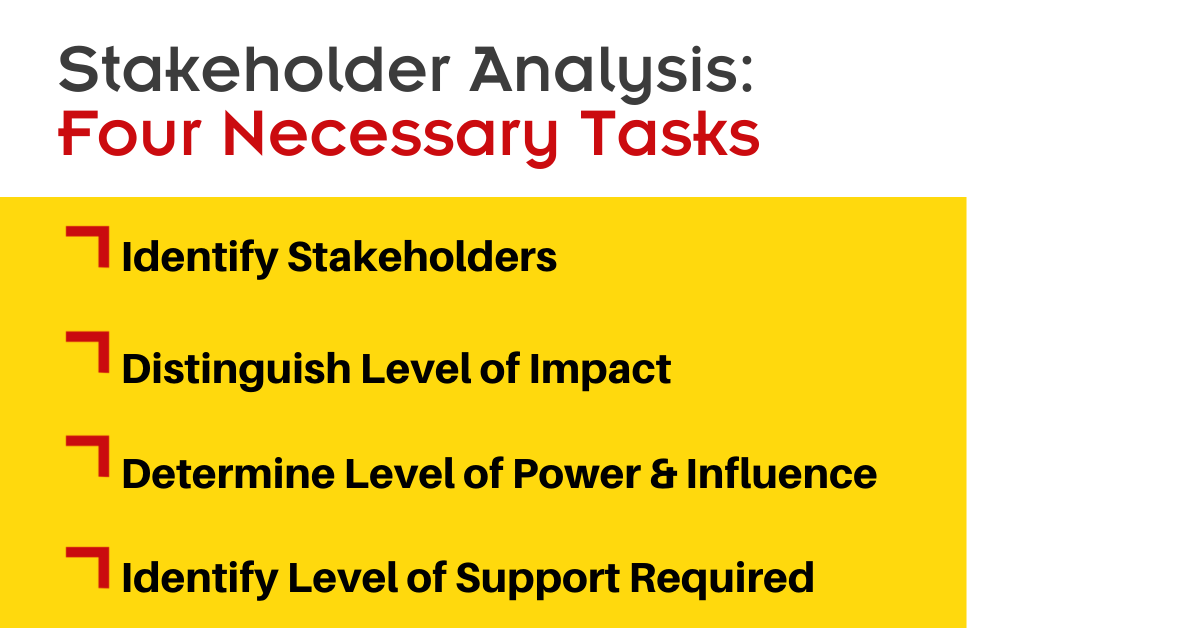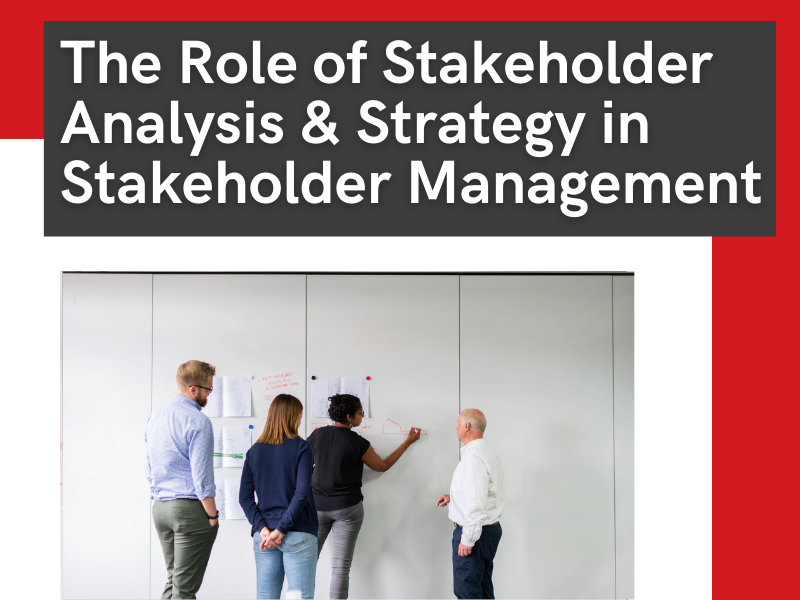4 minute read
Takeaway: Both a thorough stakeholder analysis and strategic plan are required as a first step to effectively managing stakeholders for any project.
Stakeholder management is one of those ubiquitous subjects in any business-related change activity. Despite this, the topic often seems to be misunderstood, its importance underestimated or the level of commitment, planning and follow through under-appreciated. This often results in either incoherent or cursory stakeholder efforts. Yet effective stakeholder management is critical to driving change; in our experience, strong stakeholder work is one of the top 3 predictors of successful change efforts.
So what is effective stakeholder management? Well firstly, we will focus on what it is not: it is not a traditional top down ‘tell and sell’ communications activity; nor is it that esoteric concept we often hear espoused of creating ‘buy-in’ – whatever that means. Effective stakeholder management involves a rigorous process of identifying, analysis, planning and pro-active monitoring and management of stakeholder activity. Because proper analysis and strategizing are absolutely necessary in the whole of stakeholder management, we’re going to focus solely on those for now.
Stakeholder Analysis
Not all stakeholders are created equal, and a common error is to create a ‘one size fits all’ approach. This is usually associated with the top-down communications approach. Our analysis is designed to identify genuine stakeholders and then classify them.

Task 1: Identify Stakeholders
Any change effort is going to impact different stakeholders in different ways and to different extents. The first principle is that there must be a 2-way interdependent element in the stakeholder relationship: genuine stakeholders can either contribute towards or undermine change efforts, to a greater of lesser extent. (Freeman, 2011) It is important to keep this perspective in order to avoid creating lists of hundreds of ‘stakeholders’ who may be merely interested or only tangentially impacted by any changes.
Task 2: Level of impact
The second task is to distinguish the level of impact the changes are likely to have on the stakeholder groups. At its most basic level we classify this on a relatively low to high range. We use a relative score to avoid the inevitable ‘regression to the mean’ type of clustering if an absolute measure is used.
Task 3: Level of Power/Influence
The next task is to identify the level of power or influence that the stakeholder has in the context of the change effort. We define this as the ability to make things easier or harder/impossible. Again, we use a relative range from highest to lowest, rather than absolute rankings.
Task 4: Level of Support Needed
The final task is to identify what level of support is required from the stakeholder in order for the change effort to be successful. We use a 5-point scoring range:
0. Opposed/strong reservations
1. Some concerns
2. Neutral, ‘let it happen’
3. Positive Perception – support
4. Enthusiastic advocate
It should be obvious that, while desirable, to have all stakeholders as level 4 advocates is neither necessary nor a good use of scarce time, effort or resources when starting a project.
The stakeholder analysis work can be mapped onto a 2 by 2 grid for an easy reference and is a useful tool for visualising the relative positioning of the different stakeholders.

Stakeholder Strategy
Using the Stakeholder mapping grid there are generic strategies that are appropriate for each quadrant. We have adapted the common strategies to fit a collaborative change approach that creates faster stabilisation of change. This approach allows for a quicker return on investment from change efforts. Use the following Stakeholder Strategies diagram for reference:

While a necessary part of stakeholder management, analysis and strategy are not the only important pieces to focus on; engagement and analysis are equally as crucial. We should not underestimate the need for engagement amongst stakeholders and the role it plays in a stakeholder management programme. Get the full picture with our follow-up article on Stakeholder Engagement here.
Simon Davies is a Senior Consultant at ON THE MARK.
OTM is the leading global boutique organization design consultancy with offices in the USA and UK. With over 450 successful redesigns and operating model modernizations completed, OTM is the owner of the industry’s most integrated, comprehensive, and holistic organization design solution. OTM enables its clients to realize their future ambitions.


